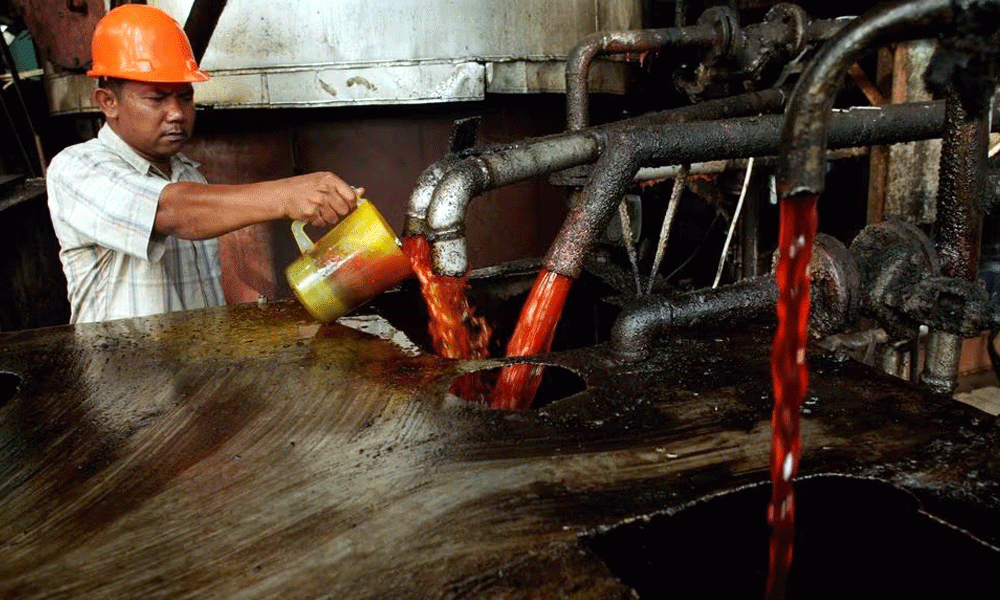JAKARTA: Malaysian palm oil futures reversed losses on Thursday amid lower trading volumes and worries over poor production expectations in the fourth quarter this year.
The benchmark palm oil contract for November delivery on the Bursa Malaysia Derivatives Exchange went up 33 ringgit, or 0.85%, to close at 3,919 ringgit ($903.93) a metric ton.
“Rather thin volume today, suggesting a lethargy in selling activities. The biggest worry is low arrival of fresh fruit bunches and poor production performance both in August and September,” said Paramalingam Supramaniam, director at Selangor-based brokerage Pelindung Bestari.
“Looking at the overall trend, there is huge possibility of no peak production in the fourth quarter this year. This dismal performance will likely keep prices well supported in the near term,” he added.
Dalian’s most-active soyoil contract fell 0.88%, while its palm oil contract was down 0.53%. The Chicago Board of Trade gained 1.32%.
Palm oil tracks price movements in related oils as they compete for a share in the global vegetable oils market.
Malaysian palm oil lower
Indonesia, the world’s biggest palm oil exporter, plans to lower export levy rates of the tropical oil to improve competitiveness against rival vegetable oils and raise farmers’ income.
Malaysia’s palm oil inventories are expected to have climbed to their highest levels in six months at the end of August due to lacklustre export demand, a Reuters survey showed.
Malaysia’s August palm oil exports are seen at 1,376,412 tons, according to Amspec Agri.
Exports of Malaysian palm oil products for August fell 9.9% to 1,445,442 tons from 1,604,578 tons shipped during July, cargo surveyor Intertek Testing Services said.
The Malaysian ringgit, palm’s currency of trade, gained 0.33% against the dollar. A stronger ringgit makes palm oil less attractive for foreign currency holders.
Oil prices firmed on Thursday, edging up from multi-month lows on a possible delay to output increases by OPEC+ producers and a decline in U.S. inventories, though the gains were capped by persisting demand concerns.
Stronger crude oil futures make palm a more attractive option for biodiesel feedstock.

Source: Brecorder





























